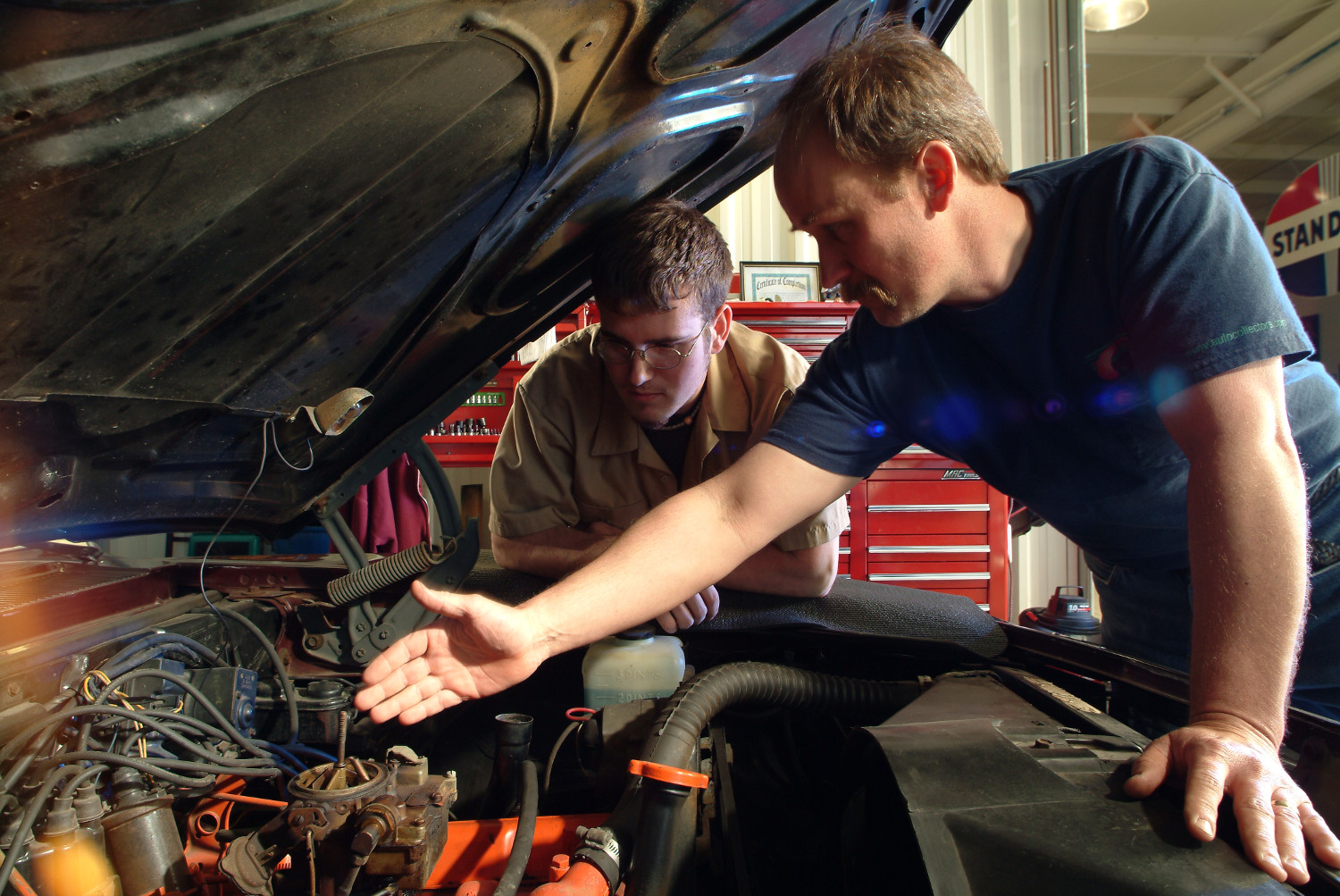Media | Articles
Fixing electrical gremlins and idler arms
Hagerty contributor and resident Hack Mechanic Rob Siegel is once again lending us his wrenching expertise, answering questions from Hagerty Drivers Club members. Brace yourself for some knowledge!
Electrical gremlins
Hagerty member John Schweitze writes:
“I have a 1955 Chevy Bel Air two-door hardtop with an electrical problem. A while ago, I had a guy repair the lights and instrument cluster, and he installed a new oil pressure gauge. Since then, I’ve had issues. There’s no turnover, no clicking sound, nothing. The battery tests fine. I had the starter checked. It had a striker problem and was fixed. The generator (12-volt) checked out okay, too. I’m at my wits’ end.”
Rob says:
If the battery runs down while the car sits, check for a parasitic drain by shutting the car off and connecting a multimeter set to measure DC amperage between the negative battery terminal and chassis ground. It should be less than 50 milliamps. If it’s higher, pull fuses until it drops and then check what circuits are on that fuse.
Marketplace
Buy and sell classics with confidence
With a fully charged battery and no click from the starter solenoid, that sounds like a problem in the solenoid wiring. There’s a thick cable running from battery positive to the big threaded terminal on the starter solenoid, and a small wire goes to the solenoid from the ignition switch. There should be 12 volts on the fat wire all the time and 12 volts on the thin wire when you turn the key to ignition. If that’s not the case, run a wire from the positive battery terminal to where the thin wire goes on the solenoid. If, when you touch that wire to battery positive, the engine cranks over, you have a wiring problem from the ignition switch to the starter solenoid.
Idler arm woes
Hagerty member Lee Rush writes:
I recently completed a front brake job on my 1964 Ford Falcon Futura with manual steering, and I replaced the idler arm bushing. What is the correct torque for the idler arm to frame bracket nut? I have the factory service manual on CD, and that spec isn’t in there. I’ve called several shops, and I spoke to a Ford service tech, but no one can help. I ended up tightening it to 120 foot-pounds. Before I did this, I set the front wheels as close to straight ahead as possible. Now I have to hold the wheel hard left to keep it straight down the road. So what is the best way to align the front steering so the idler arm is perfectly centered before I tighten the nut down on the serrated inner sleeve?
Rob says:
I’ve done some digging, and the figure is listed in the 1965 Comet, Falcon, Fairlane, and Mustang shop manual as 40 to 55 foot-pounds for the manual-steering six- and eight-cylinder Comet and Falcon. The text says to “tighten to lower limit, then continue until cotter pin hole is aligned with nut.”
As for the car pulling to the right, the rubber idler bushing essentially twists and snaps the steering back to center. You get one shot at tightening the nut and embedding the toothed inner sleeve into the mounting-shaft flange, and if it’s off by even a tiny bit, the car will pull to one side. You can try getting it aligned, but if it tracked straight before, the issue isn’t that the toe-in is off, it’s that the idler bushing is providing a force pulling it off-center. The ideal method of replacing the idler bushing would be to have the car on the alignment rack, loosen the tie-rod adjusting bolts, get the front wheels straight, be certain the idler arm is dead-centered, torque down the idler-arm bushing nut, then align the car and tighten the tie-rod adjusting bolts.
Alternatively, there are roller-bearing idler-arm kits available that eliminate the issue of the centering force imparted by the stock rubber bushing. So whether it’s taking another crack at getting the wheels straight and the idler arm centered before torquing the bushing nut or converting to a roller-bearing setup to eliminate the steering pull, you’re probably going to need to go through the repair again.
The article first appeared in Hagerty Drivers Club magazine. Click here to subscribe to our magazine and join the club.










